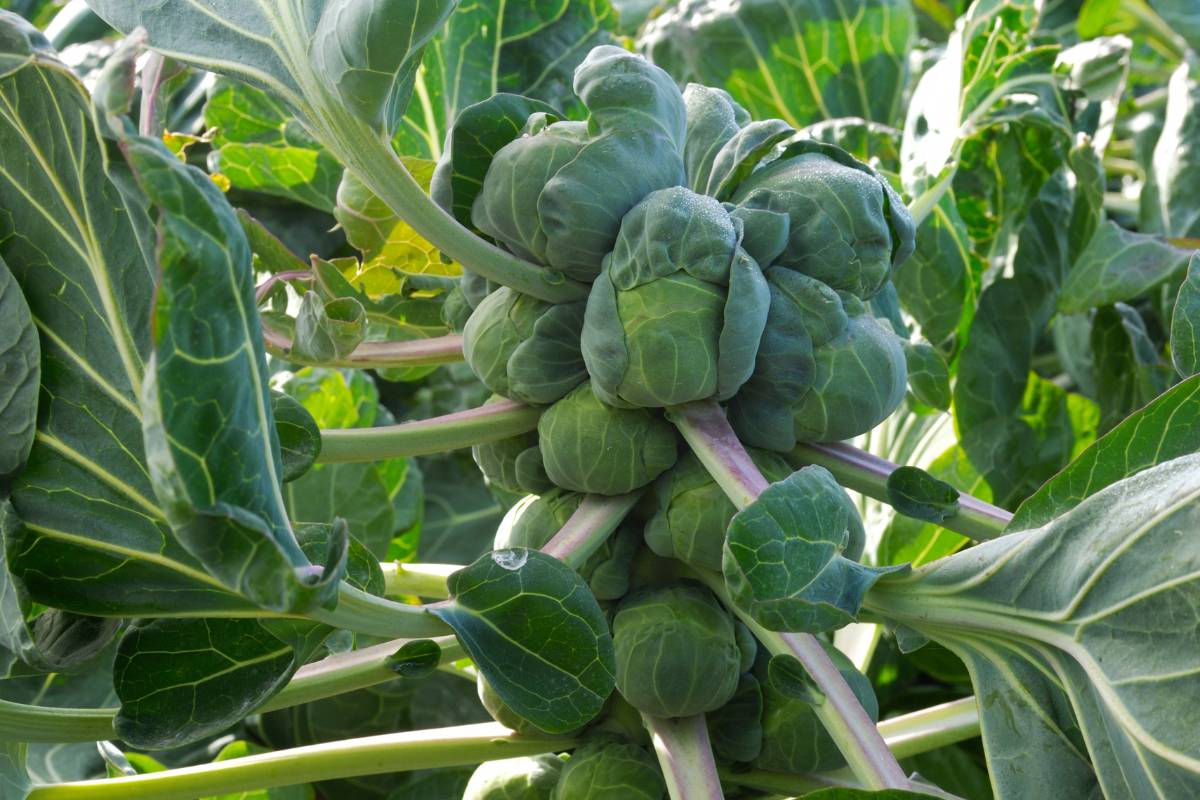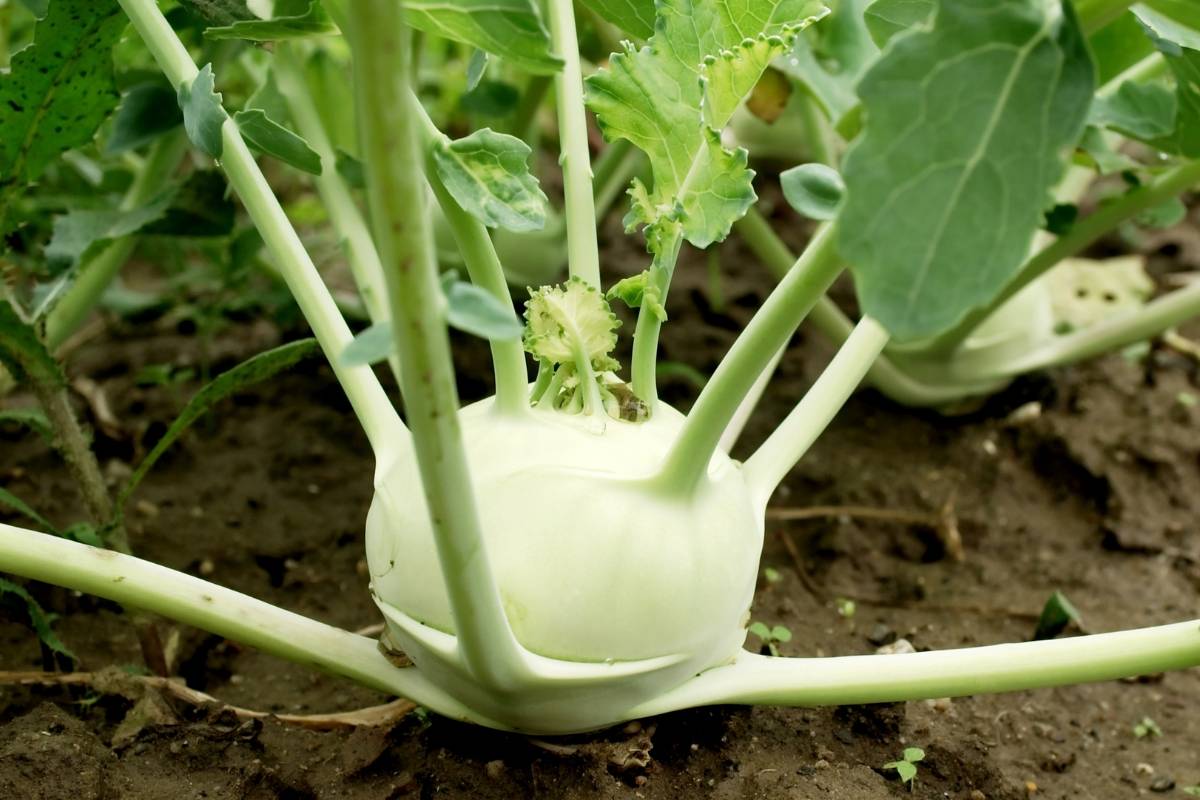At first glance, wild cabbage appears like a pretty uninteresting plant.
It’s a medium-sized biennial or perennial plant with somewhat large, thick leaves and hefty stalks. It’s native to a large portion of Europe, and it grows best on unforgiving limestone cliffs, where competition from other plants is limited.
It’s neither gorgeous nor especially tasty, and it probably wouldn’t even catch your eye if you saw it growing in the wild. If it sprung up in your garden, you may even mistake it for a weed.
But several thousand years ago, some clever and creative humans unleashed an unthinkable amount of delicious diversity from within this humble plant, changing human history – and menus – forever.
You are more Familiar with Wild Cabbage than you Think
Though you may not have known it, you’ve likely eaten wild cabbage before.
Except that you didn’t call it wild cabbage; you called it broccoli.
Or maybe you called it kale, or cauliflower, or Brussels sprouts. Or red cabbage, or Savoy cabbage, or any of the dozens of other cultivars that have descended from wild cabbage.
That’s right – all of these different dinner menu items are members of the same species – wild cabbage (Brassica oleracea).
But how can so many of these different-looking, different-tasting vegetables all be the same plant?
The answer is that gardeners and horticulturists developed a variety of different forms, called cultivars, of wild cabbage through a process called artificial selection.
The Cultivation of Brassica Oleracea
The earliest days of Brassica oleracea cultivation are a bit mysterious.
We know that the wild plant (and its ancestors) were originally found in the eastern Mediterranean region of Europe. And we know that 4,000-year-old Sanskrit writings reference the cultivation of the plant, as do Greek writings dating about to the sixth century B.C.
But aside from that, we have more questions than answers regarding the plant’s earliest days in human hands. Nevertheless, while we don’t know the answers to all the “who” and “when” questions, we do know a lot about the “how” questions.
Essentially, it began when humans noticed that some wild cabbages differed from the others.
Some had larger leaves, while others had unusual flowers or more well-developed terminal buds. Nowadays, we call these different forms varieties – naturally occurring variations of a single species. But people then selectively propagated these plants to help emphasise these small differences in a process called artificial selection.
Whereas natural selection is driven by things like predators, competitors, and changes in climate, artificial selection is driven by human desires, such as the desire to have tastier leaves or more numerous lateral buds.
And through this process of artificial selection, humans eventually produced the myriad cultivars of wild cabbage that we enjoy today.
The Wild Cabbage Family Tree: Important Cultivar Groups
As of 2021, there were 332 registered Brassica oleracea cultivars, and this number will surely continue to grow as humans strive to develop more and better versions of the plant. To make things easier, most botanists and horticulturists break these down into eight cultivar groups, as established by the Royal Botanic Gardens, Kew Species Profile.
These eight groups are as follows (presented in alphabetical order):
1. Acephala
These plants, which most closely resemble wild cabbage, produce large leaves. In fact, large leaves appear to be what humans focused on while developing these plants. However, these leaves do not form heads the way some other cultivar groups (such as Capitata, discussed below) do.
Kale is probably the most familiar example of this cultivar group, but collard greens, ornamental kale, and tree cabbage are also placed here. Some members of this group have coloured leaves and are grown as ornamentals.
2. Alboglabra
This group comprises cultivars that are common in Asian cuisine, such as Chinese kale and Chinese broccoli (also called Gai Lan). These plants were selected for large leaves, thick stems, and slightly smaller flowers than broccoli.
From a taste perspective, Chinese broccoli is sometimes described as “stronger and more broccoli-esque than regular broccoli.”
3. Botrytis
This group contains some of the most familiar wild cabbage cultivars, including cauliflower and Romanesco. These plants were selected for their flower production.
While wild cabbage grows best in a Mediterranean climate, several hot-climate cultivars in this group were developed in India more than 200 years ago.
4. Capitata
This group, which includes cabbage, red cabbage, and savoy cabbage, comprises cultivars that produce heads. This was the primary characteristic sought during their development. In fact, “capitata” literally means “forming a head” in Latin.
5. Gemmifera
This group, primarily Brussels sprouts, was created when botanists selected for wild cabbage plants that produced numerous and large lateral (or axillary) buds. These buds develop along a thick, upright stem, but they’re often removed from the stem before being sold in grocery stores and farmer’s markets.
This group was originally developed in Belgium, though authorities differ on when. Some, like the Royal Botanic Society, report that these plants first appeared in the 18th century, while others contend that the plants first appeared in the 1200s.
6. Gongylodes
Developed by emphasising plants with large (sometimes colourful) stems, these plants slightly resemble root vegetables, but they’re also members of the wild cabbage group.
Kohlrabi is the best-known example of this group. One of the older cultivar groups, these plants were first developed in Europe during the 15th century.
7. Italica
This group includes several cultivars whose flowers branch into several small “subheads.” It includes broccoli, as well as similar plants, such as purple sprouting broccoli.
These cultivars are thought to have been developed in the 18th century, likely in Northern Europe.
8. Tronchuda
One of the most unusual cultivar groups, this group includes Portuguese cabbage and sea kale. These plants are annuals (rather than biennials) and have broad spreading leaves.
Also of note, these cultivars tend to produce fleshy petioles (leaf stems) and thick leaf midribs.
That’s NOT all, Folks: Wild Cabbage Hybrids
Astute readers (and fans of cruciferous vegetables) may have noticed a few familiar plants missing from the groups discussed above.
Take, for example, broccolini. A relatively new vegetable, first developed in 1993, that’s prized for its mild flavour, broccolini is becoming increasingly popular in both grocery stores and on restaurant menus.
But while it is technically a descendant of wild cabbage, it doesn’t appear in any of the cultivar groups above.
That’s because broccolini is actually a hybrid. It’s produced by crossbreeding regular broccoli (part of the Italica cultivar group) with Chinese broccoli (part of the Alboglabra cultivar group). Accordingly, its botanical name is Brassica oleracea var. italica × alboglabra.
Broccoflower (which should not be confused with Romanesco) is another hybrid that falls under the wild cabbage umbrella. It is the result of crossing broccoli with cauliflower to produce plants that look like typical cauliflower, except that they’re green. Accordingly, its botanical name is Brassica oleracea var. botrytis × italica.
Brassica: More than just Oleracea
It’s certainly interesting that a single species is responsible for so many different plants growing in gardens and appearing on dinner tables, but the entire Brassica genus is a fantastic example of the diversity found in some plant lineages.
For example, Brassica rapa is a plant species that’s closely related to wild cabbage, and it too is also available in myriad forms, including naturally occurring subspecies (similar to varieties) and human-created cultivars.
A few of the most familiar versions of the plant include:
- Pak choi (Brassica rapa subsp. chinensis)
- Napa cabbage (Brassica rapa subsp. pekinensis)
- Rapini (Brassica rapa var. ruvo)
- Turnip (Brassica rapa subsp. rapa)
- Mustard greens (Brassica juncea)
- Swede (Brassica napus)
Sometimes, other members of the Brassica genus are crossed with members of the wild cabbage species. Kalette, (Brassica oleracea var. viridis x gemmifera) for example, is a plant created by hybridising kale (Brassica oleracea var. viridis) with Brussels sprouts (Brassica oleracea var. gemmifera).
The result is a plant that produces long, vertical stalks (like Brussels sprouts) and numerous kale-like growths from the sides of the stalks.
***
It’s hard to know which part of this story is most impressive.
Is it the incredible genetic flexibility lurking in the humble wild cabbage or the sheer human ingenuity that developed this single species into the myriad varieties available today?
That’s probably a question without a definitive answer, but it’s interesting to ponder.
But here’s the cool thing about the artificial selection of plants: Anyone can do it – even you. All you need is some high-quality seed stock, a bit of creativity, and time.
And if the ancient peoples were able to achieve such amazing things without the knowledge of genetics, access to modern gardening tools, or indoor growing facilities, what might you be able to accomplish in your 21st century backyard garden?
Maybe 100 years from now, someone will be reading about the varieties you created.











